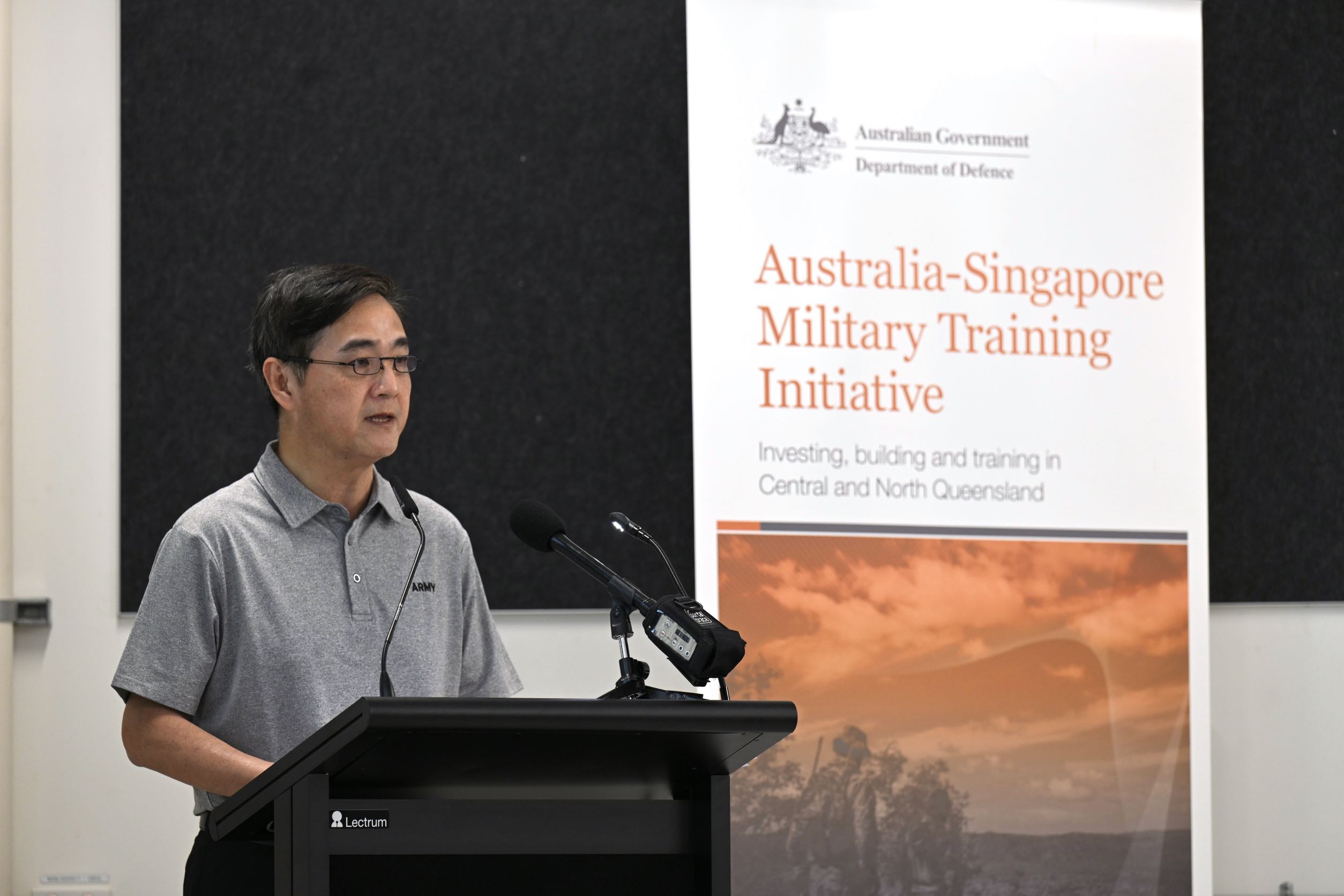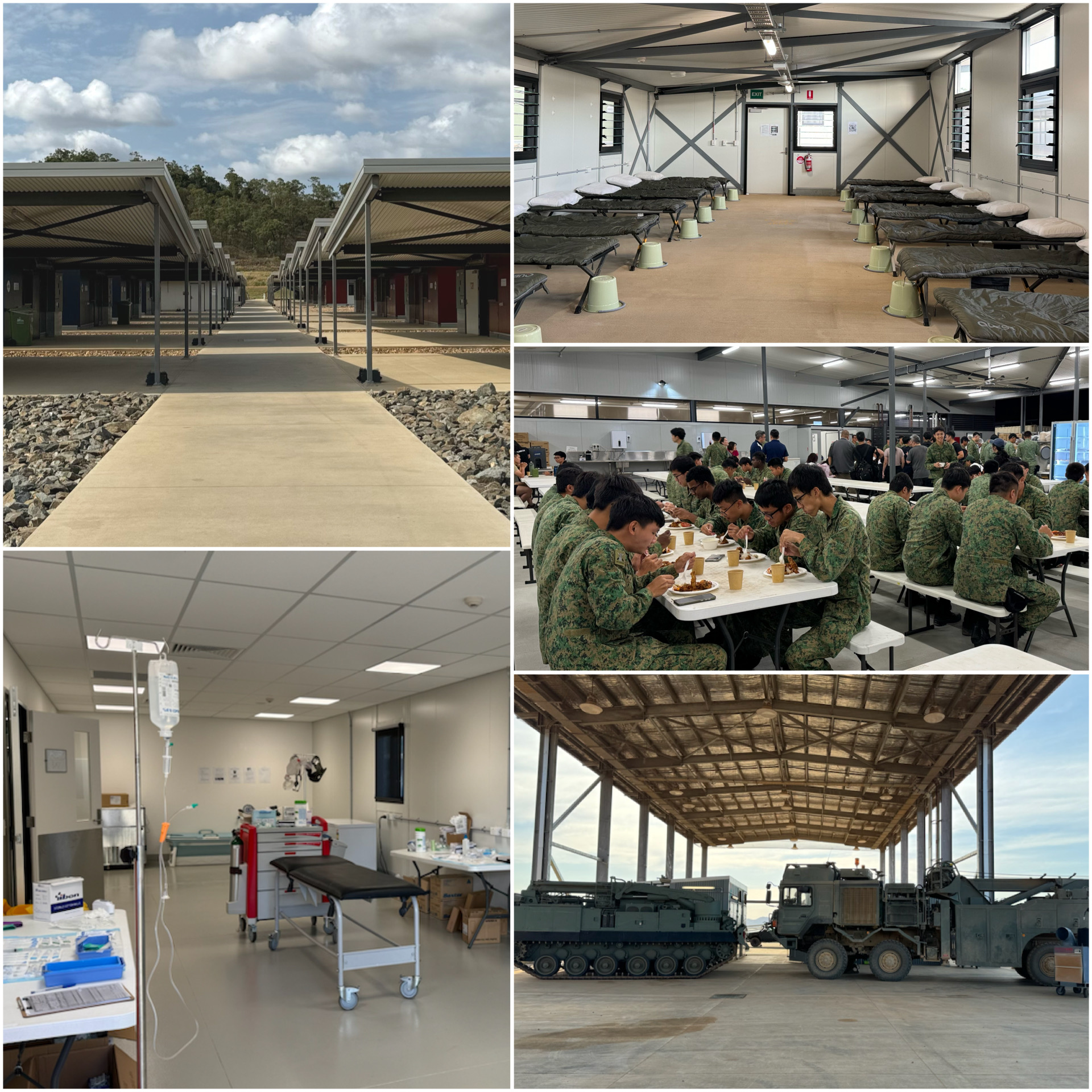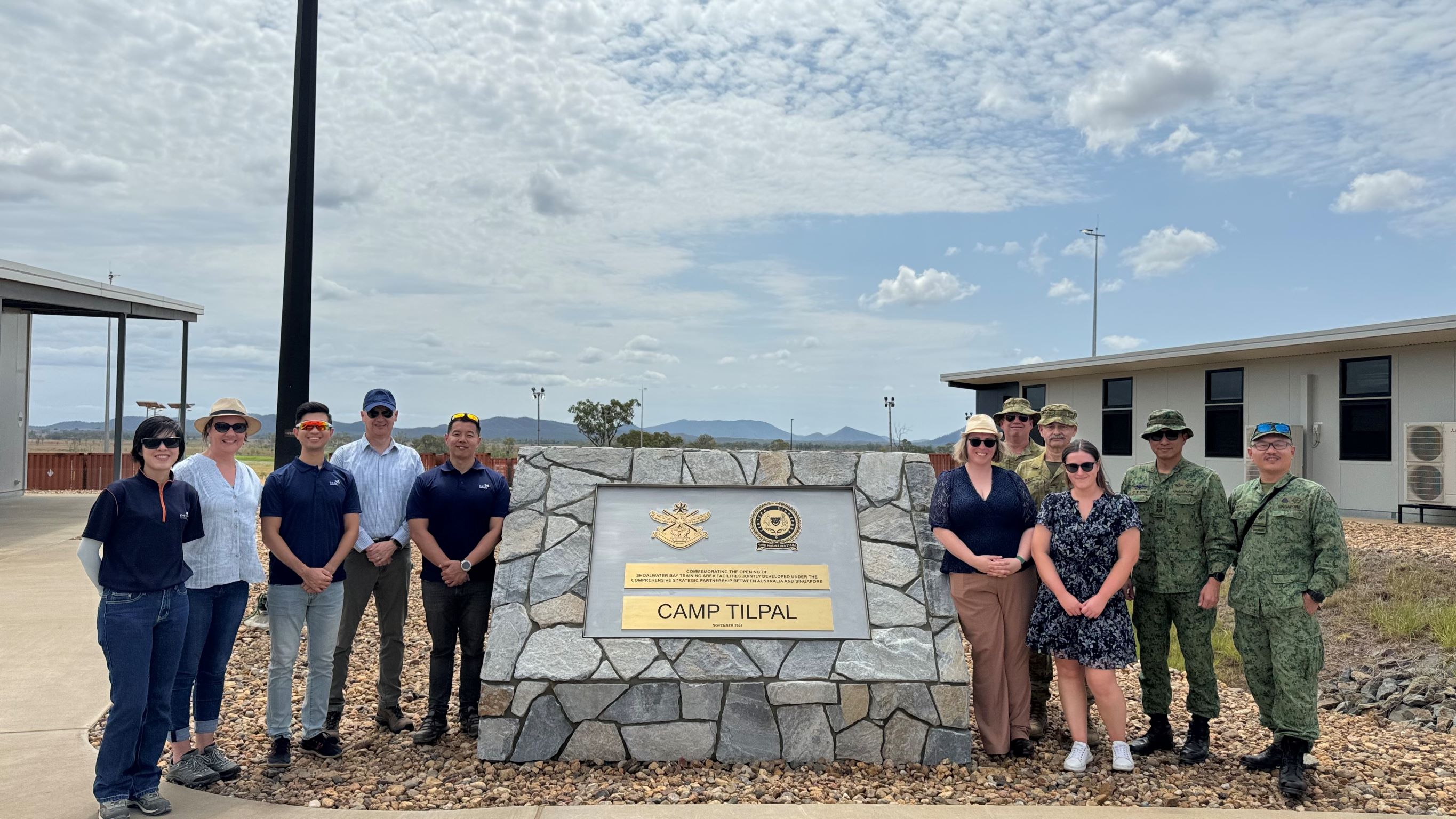13 Nov 2024
For land-scarce Singapore, overseas training exercises such as Exercise Wallaby allow the Singapore Armed Forces (SAF) to conduct realistic, large-scale and integrated exercises that cannot be replicated in Singapore. On 13 November 2024, Senior Minister of State (SMS) for Defence Mr Heng Chee How attended the Shoalwater Bay Training Area (SWBTA) Commemorative Ceremony held in Rockhampton, Australia. The ceremony marks the completion of the expanded SWBTA, which was jointly developed by Australia and Singapore since 2016 for the SAF and the Australian Defence Force (ADF)’s military training activities.

SMS Heng at the commemorative ceremony.
The expanded SWBTA is approximately five times the size of Singapore, and is a valuable training area that allows the SAF to conduct cross-service integrated training, including large scale combat vehicle manoeuvres and live firing exercises. Its completion is a significant milestone in enhancing the operational readiness of the SAF, with an increase in training duration from six to nine weeks. Together with the SAF, DSTA set up the Australia Training Area Development (ATAD) programme team to bring the expanded SWBTA to life from ground zero. A project of this size requires technical expertise from a multidisciplinary team, with domain knowledge in areas including training systems, building and infrastructure, communications, network infrastructure, range safety, explosive safety and armaments.

Camp Tilpal is the largest purpose-built field camp infrastructure in the training area, and can house up to 2,000 personnel.
“Much thought was put into the design of key camp infrastructure, which includes the reconfigurable layout in the Exercise Control Building to cater to training needs, robust communication network infrastructure throughout the training area and improved accommodations to enhance the training experience and well-being of soldiers,” shares Senior Programme Manager Programme Office (Range Development), from DSTA’s Simulation and Training Systems Hub.
The team took into account human and vehicle traffic flow, making sure to smoothen access to different areas of the camp in its design with soldiers at rest and soldiers conducting their training preparation activities. For instance, the emergency rooms in the dedicated medical centre are designed to allow for direct road access to facilitate quick helicopter evacuation. The robust comms infrastructure with strong 4G telco coverage through the entire camp also enables access to medical expertise with full-fledged hospitals through tele-medicine, allowing for rapid diagnosis and treatment to enhance patient care. In addition, the camp has a well-ventilated and sheltered maintenance facility, allowing more essential maintenance tasks on the SAF’s vehicles to be conducted, hence achieving higher readiness for training. Finally, the cookhouse is centrally located and close to the command centre buildings, while the toilet and shower facilities are well spread between the accommodation buildings for quick access.

The multidisciplinary team from DSTA worked closely with the Singapore Army and Australian counterparts to
develop the expanded training area.
“We could not have achieved this without the strong partnership with the Army and our Australian counterparts. It’s certainly a privilege to see the place come alive during this year’s Exercise Wallaby!” adds Beatrice.
